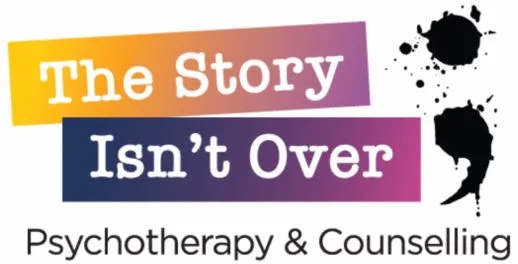Emotional Regulation: Navigating Life’s Storms with The Story Isn’t Over
Imagine this: You’re driving home after a long day, looking forward to a quiet evening. Suddenly, someone cuts you off in traffic. Your heart races, anger flares, and you feel the urge to shout. Maybe you do. Maybe you let it pass. Or maybe that flash of frustration lingers, casting a shadow over the rest of your evening. These moments are a universal part of life. But how you handle them can make all the difference.
Emotional regulation is the art of navigating these emotional storms—big or small—in ways that are healthy and constructive. At The Story Isn’t Over, we understand how emotions can sometimes feel overwhelming and how hard it can be to respond constructively. Let’s explore emotional regulation, why it matters, and how we can help you regain control of your emotional journey.
The Ups and Downs of Emotional Waves
Picture your emotions as waves in the ocean. Some days, the water is calm, the waves gentle and easy to navigate. On others, a storm hits, and the waves come crashing, threatening to pull you under. Emotional regulation is like learning to surf those waves. It’s not about controlling the ocean but finding balance even when the waters are turbulent.
Every one of us has ways of managing emotions, even if we’re not fully aware of them. Think about a time when you were upset—maybe after an argument. On a good day, you might have gone for a walk to clear your mind, called a friend to talk it out, or immersed yourself in music. These are healthy choices, soothing the emotional storm without adding to its intensity.
But then there are those harder days. Days when frustration spills over into snapping at someone else, eating to numb the pain, or avoiding the situation entirely. These responses might provide temporary relief, but they often come at a cost—leaving unresolved issues, guilt, or an even heavier emotional burden. The choices you make to manage your emotions can shape how you weather life’s inevitable challenges.
When the Waves Feel Overwhelming
Sometimes, emotions can feel less like waves and more like tsunamis—unrelenting and all-consuming. This is what emotional dysregulation looks like. Imagine feeling so intensely that even minor challenges feel monumental. Perhaps you’ve felt this before:
- Reacting with overwhelming anger or sadness to situations others handle with ease.
- Feeling like your emotions are in the driver’s seat, dictating your every response.
- Turning to harmful coping mechanisms—like drinking too much, self-injury, or withdrawing from people—just to escape the emotional intensity.
These moments can leave you feeling drained, disconnected, and stuck in a cycle that feels impossible to break. But you’re not alone, and there are ways to regain control and find balance.
Why Emotional Regulation Matters
Life doesn’t stop throwing challenges your way—unexpected setbacks, difficult conversations, and moments that test your resilience. Emotional regulation doesn’t remove these challenges, but it equips you with the tools to navigate them more effectively. It’s the difference between surviving life’s storms and thriving through them.
When you can regulate your emotions, your relationships benefit. Imagine being able to communicate your feelings in a way that fosters understanding instead of conflict. This skill strengthens bonds and reduces misunderstandings, creating deeper connections with those around you.
Healthy emotional regulation also takes the edge off stress. It allows you to stay calm and focused during tough times, helping you make decisions based on your values rather than reacting impulsively. Over time, this builds resilience, making it easier to recover from setbacks and face challenges with confidence.
Emotional regulation can significantly improve mental health. By learning to work with your emotions, you lower your risk of anxiety, depression, and harmful coping behaviors. Instead of feeling overwhelmed, you find balance, creating a sense of inner peace and well-being.
Breaking Free from Emotional Cycles
Now, imagine being in the middle of an emotional storm, struggling to stay afloat. Emotional regulation offers you a lifeboat—a set of tools to steady yourself until the storm passes. Breaking the cycle starts with understanding how your thoughts, feelings, and behaviors are connected. Here’s how it often plays out:
- A Trigger: An argument with a loved one, for instance.
- Intense Emotions: Feelings like anger, sadness, or guilt arise.
- Reaction: You might lash out, withdraw, or ruminate on the event.
But what if, instead of reacting automatically, you paused? What if you noticed the emotion, took a breath, and chose a response that aligned with your long-term goals? It takes practice, but these small moments of choice can transform your emotional patterns over time.
When to Seek Help
Sometimes, the waves feel too big to face alone. If emotions are interfering with your work, relationships, or overall quality of life, it might be time to seek support. Here are some signs that reaching out could help:
- Feeling emotionally overwhelmed most of the time.
- Struggling with self-destructive behaviors like substance use or self-harm.
- Experiencing frequent mood swings or emotional outbursts.
- Feeling disconnected from others or from yourself.
Seeking help isn’t a sign of weakness—it’s a step toward regaining control and building a life that feels more balanced and fulfilling.
How The Story Isn’t Over Can Help
At The Story Isn’t Over, we believe in your ability to navigate even the roughest emotional seas. Our tailored approach is designed to meet you where you are, guiding you toward healthier ways of understanding and responding to your emotions. Through compassion, evidence-based techniques, and personalized care, we help you find your footing.
Learning to Surf the Waves
Emotional regulation isn’t about stopping the waves—it’s about learning to surf. It’s about accepting emotions as part of being human, knowing that they don’t have to control or define you. With the right tools and support, you can ride even the biggest waves with confidence and grace.
At The Story Isn’t Over, we’re here to walk this journey with you. Whether you’re just starting to explore your emotions or looking to deepen your skills, we’re ready to help you find calm amid the chaos. Your story is still unfolding, and we’re honored to be part of it. Reach out today, and let’s navigate this journey together.



















